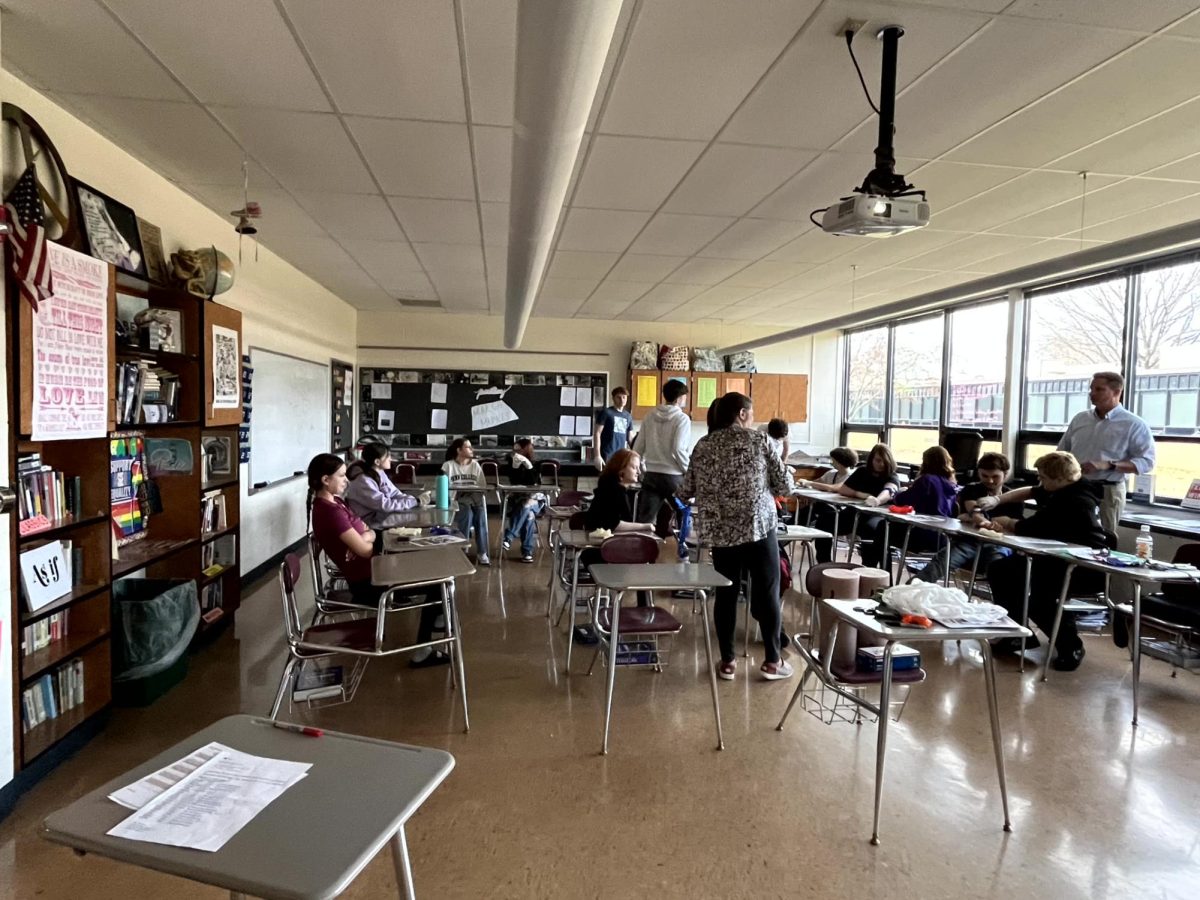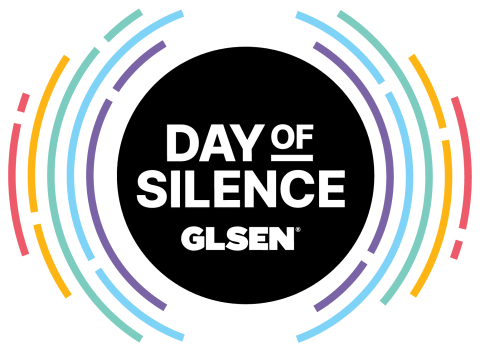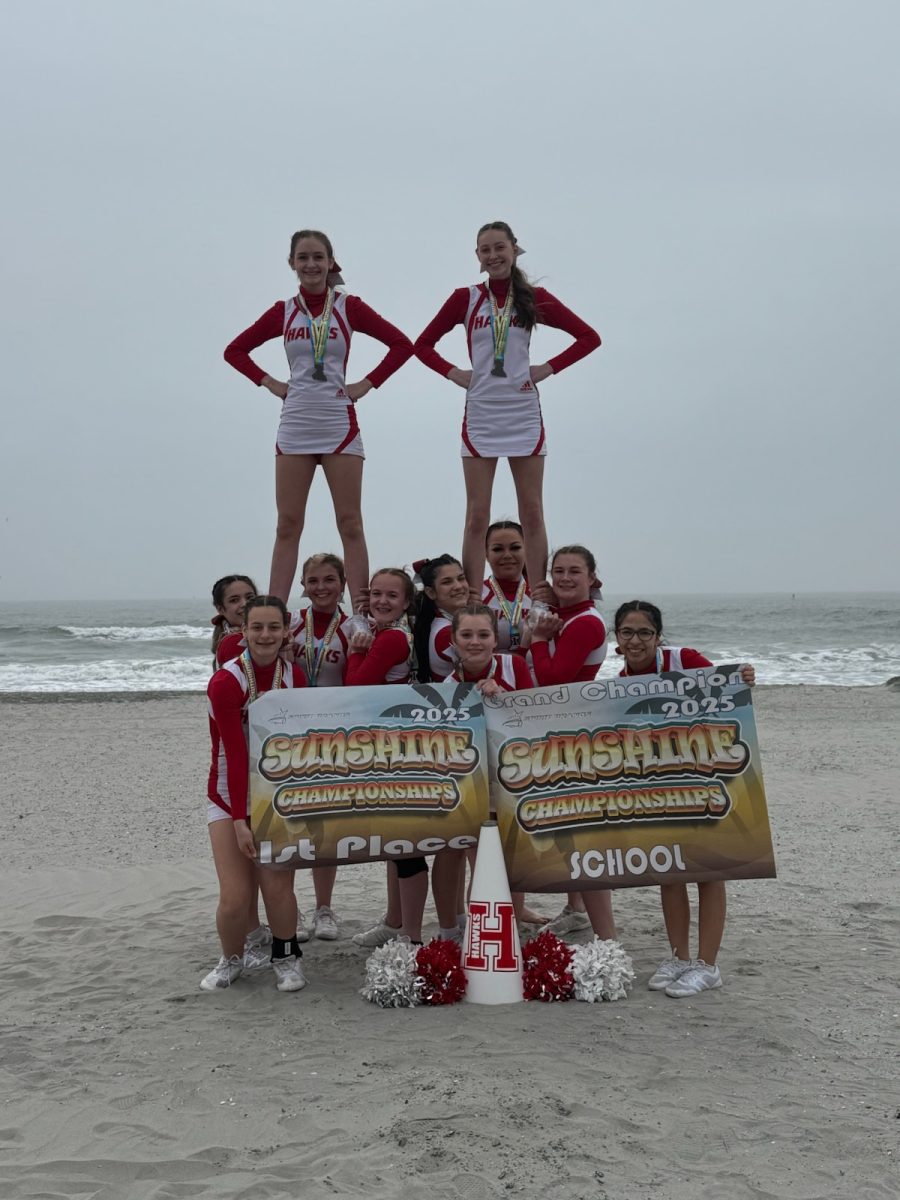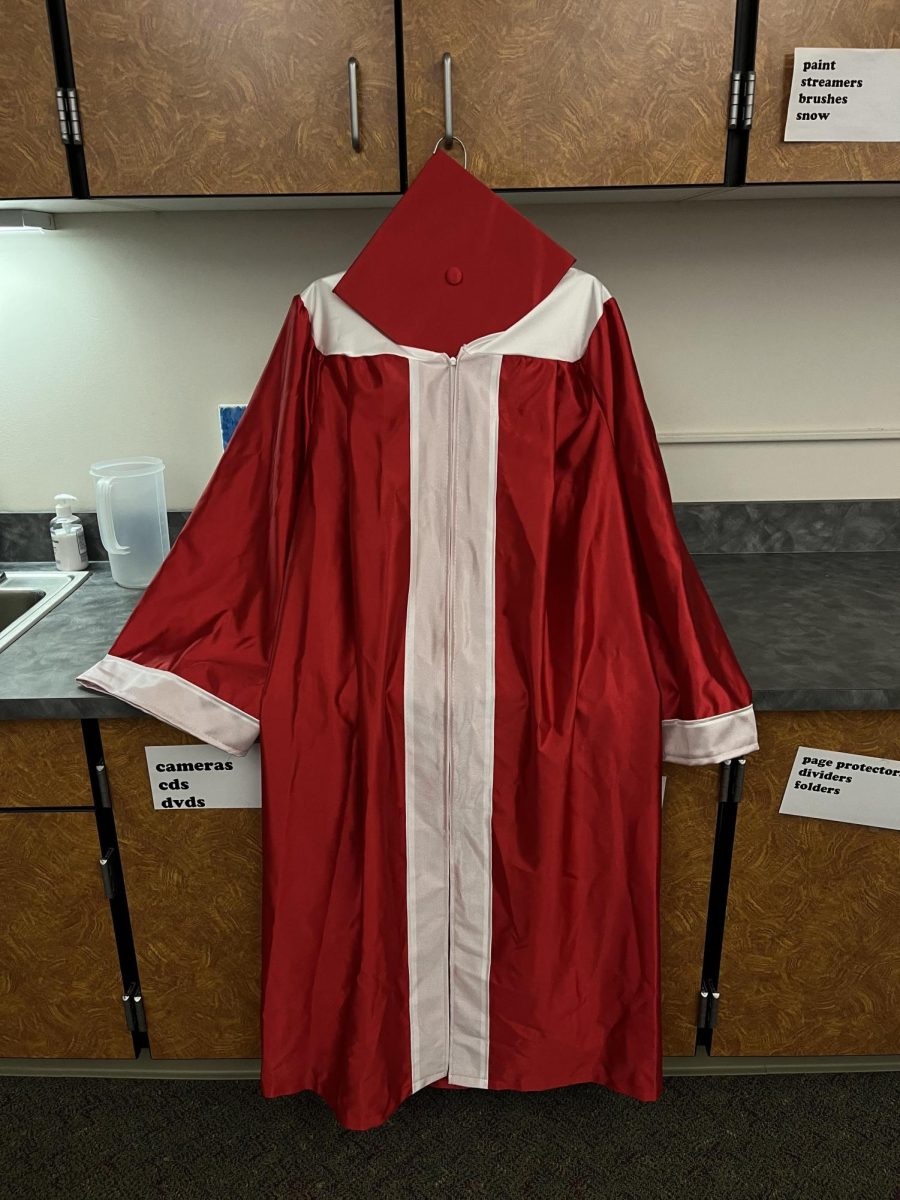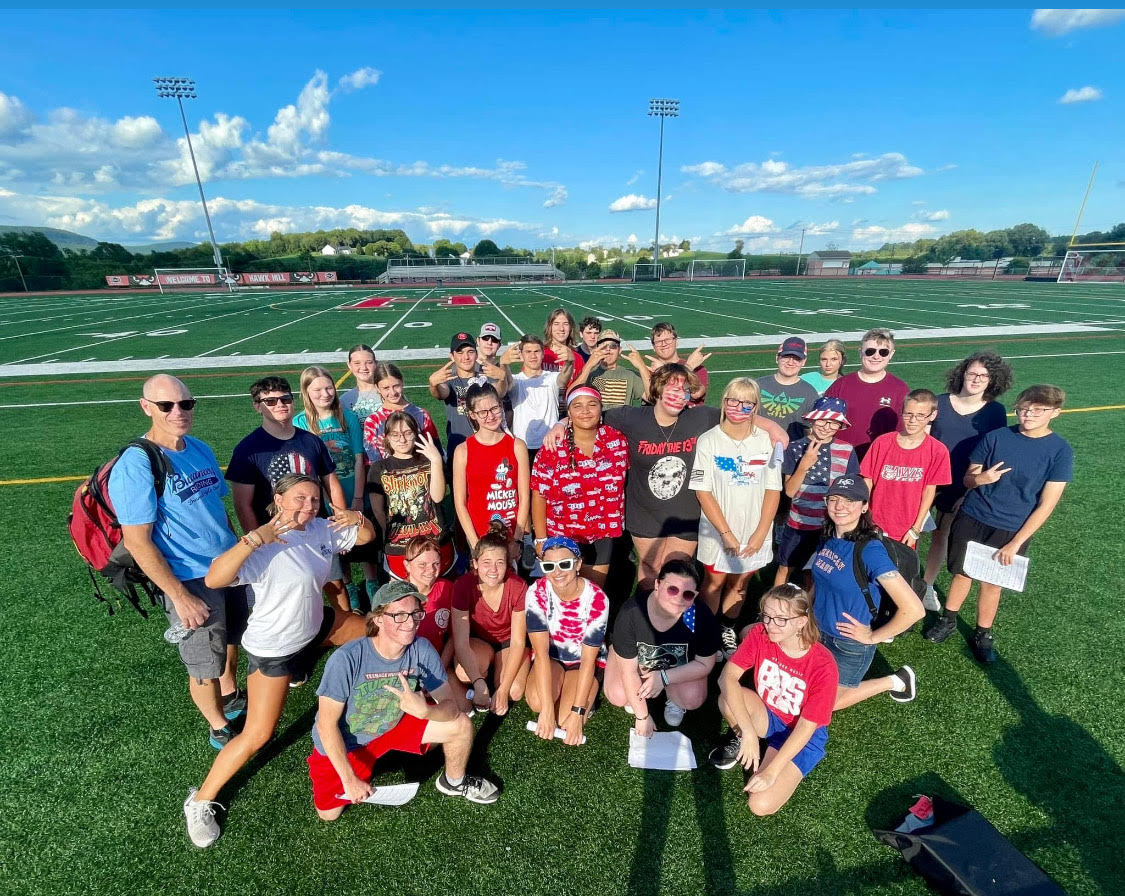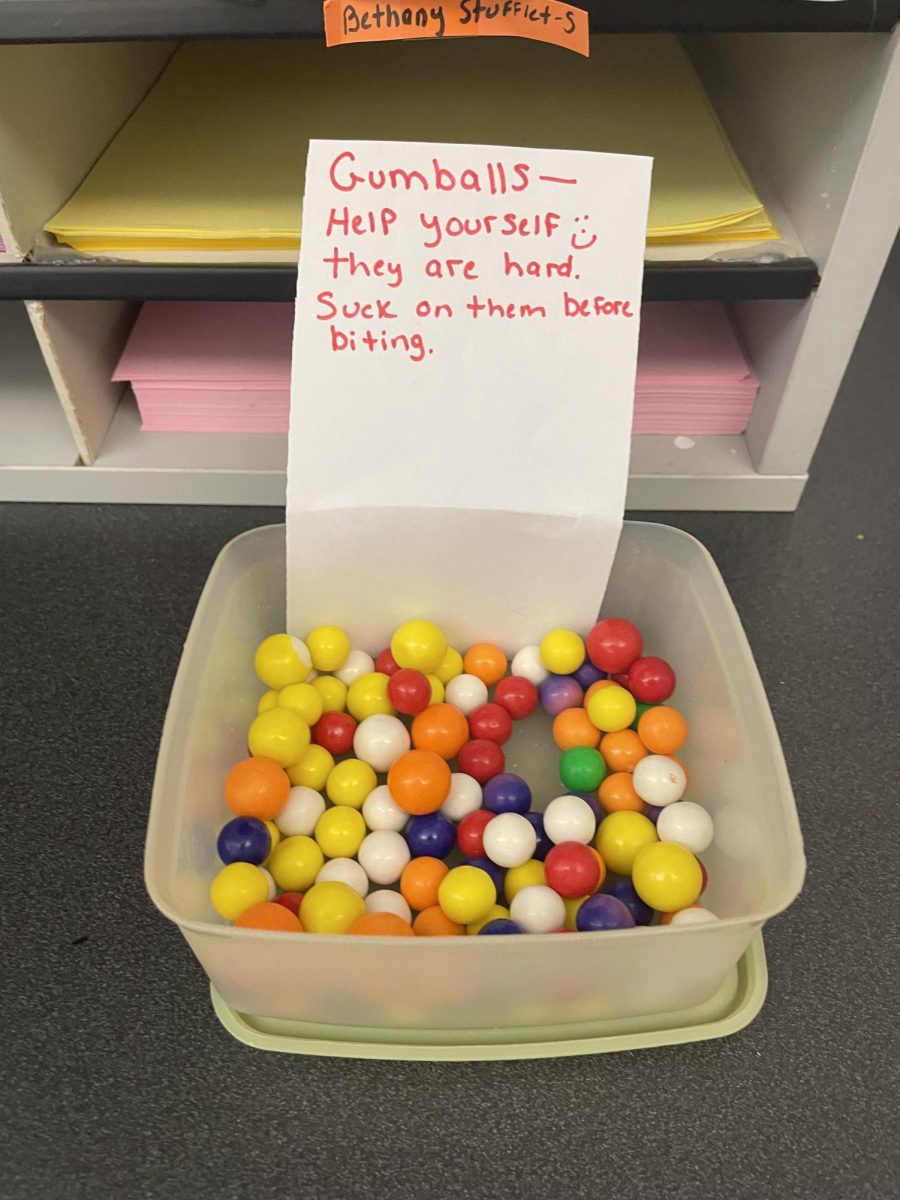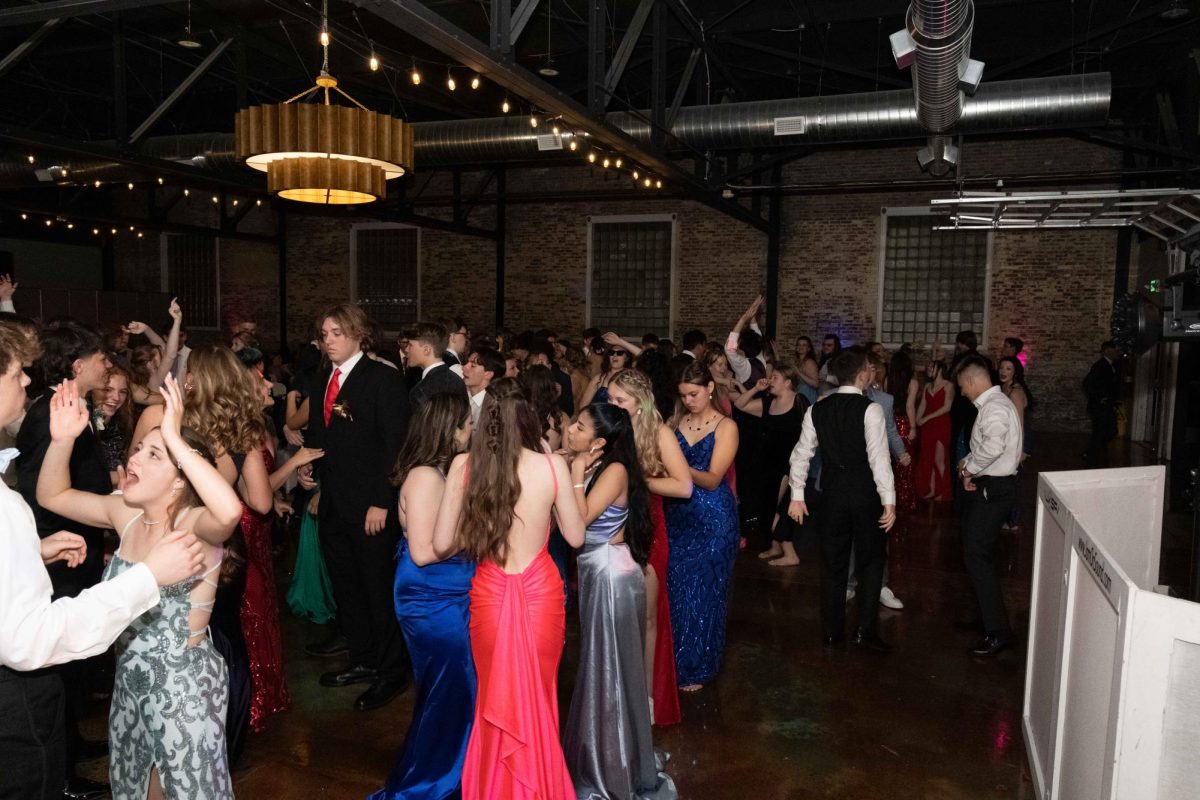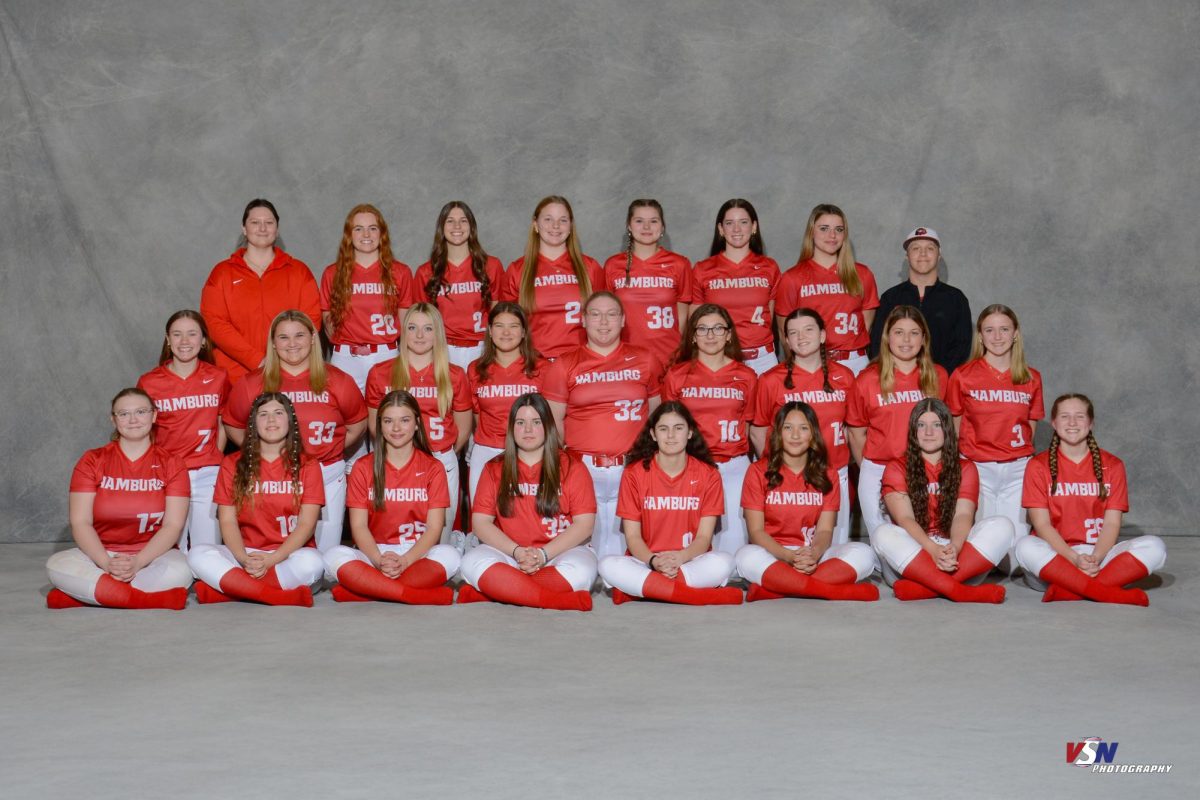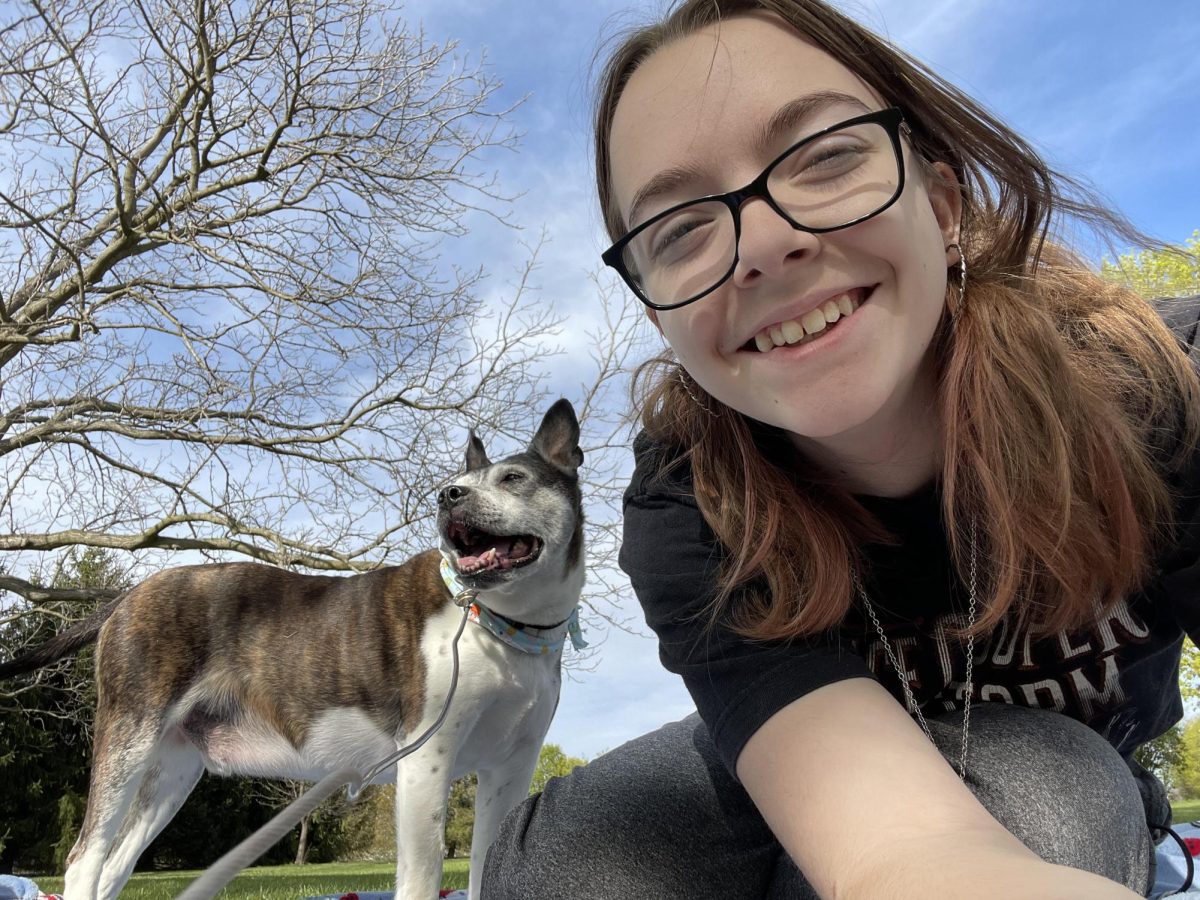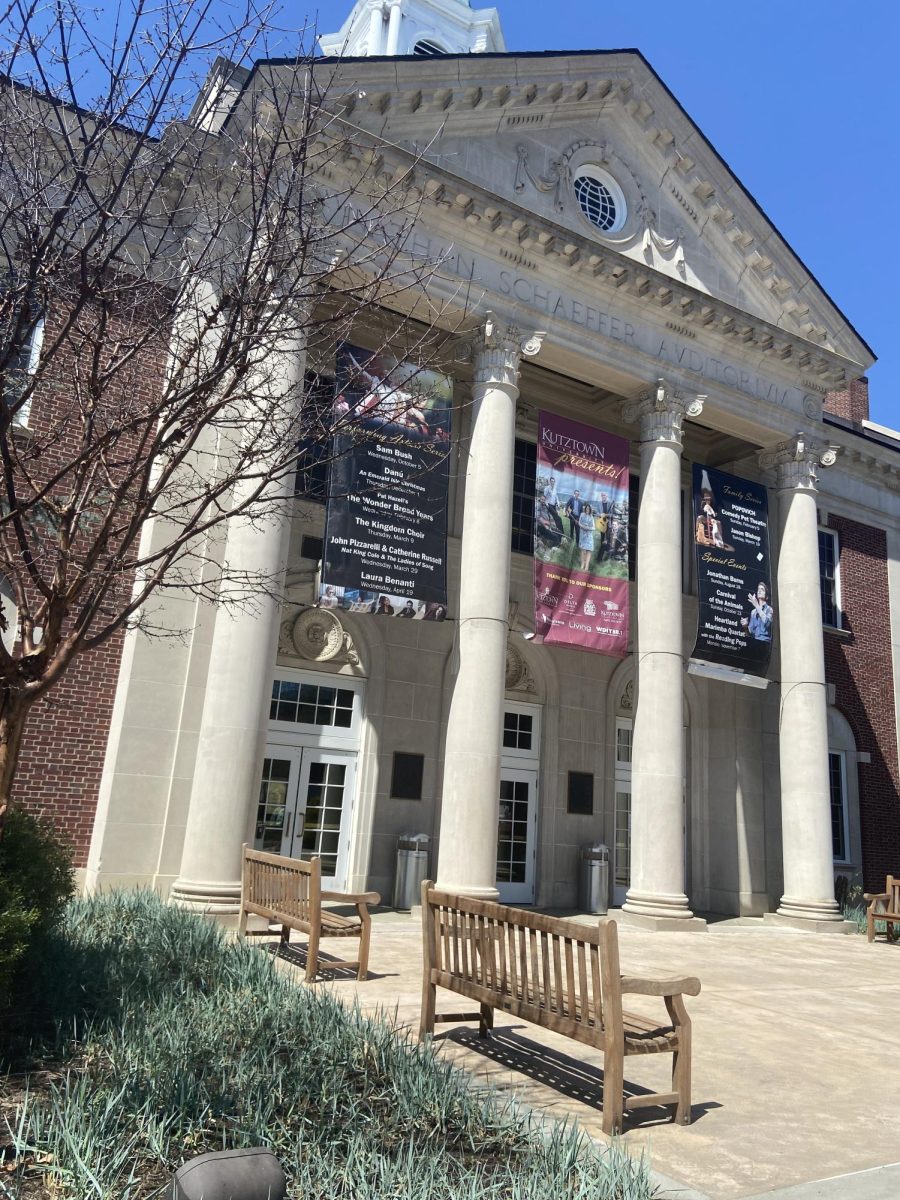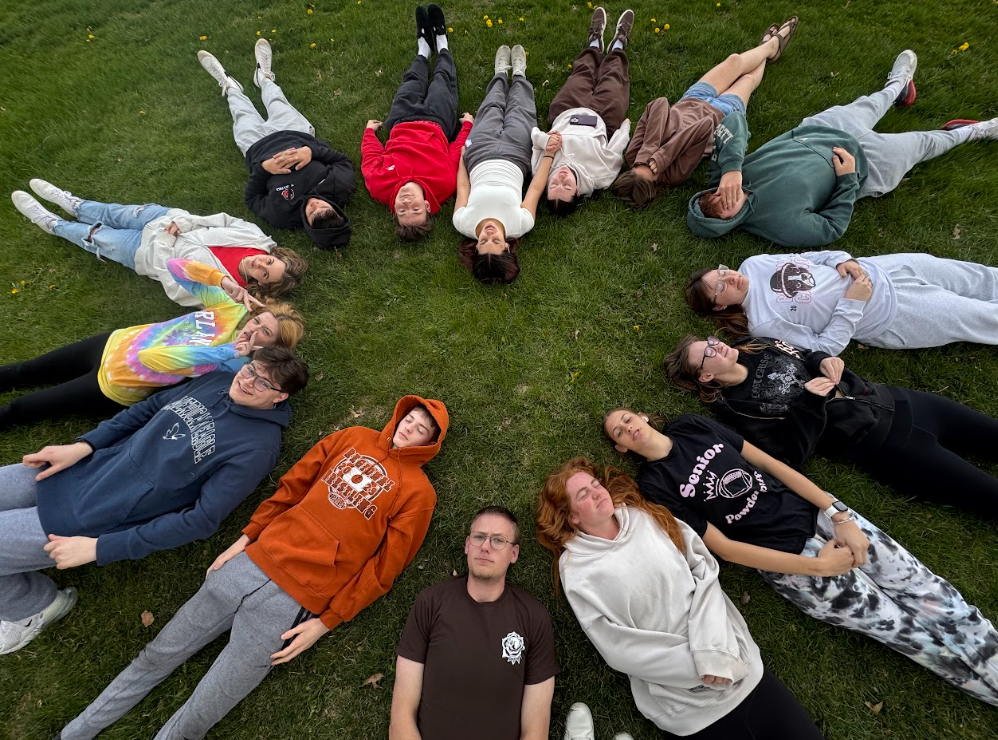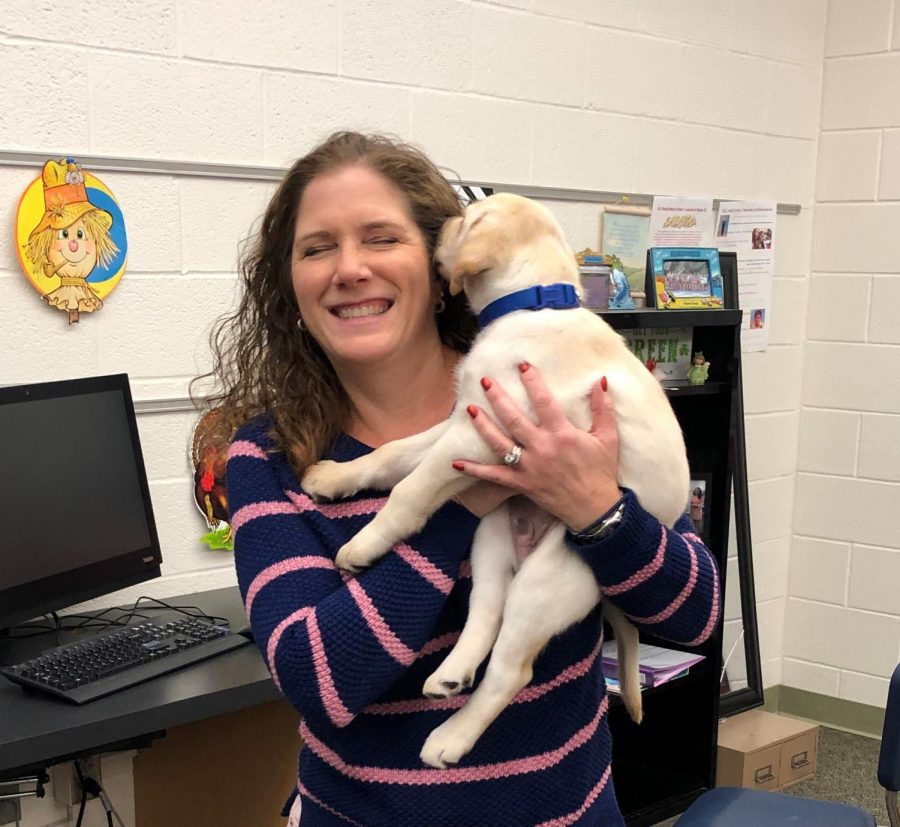New Seeing Eye Dog, Seely, captures Hamburg hearts
November 29, 2019
Seely, Mrs. McCarthy-Wright’s third dog from The Seeing Eye, is settling into his role in the library. The seven-week-old Labrador Retriever was born on November 25 of this year and was 8.4 lbs. Unlike the previous dogs of Hamburg, Wolfgang and Spike, Seely was introduced immediately to the school. Wolfgang and Spike, Mrs. McCarthy-Wright states, “no one saw until they were older,” allowing her to take them to the DeSales library with her over the summer and to grow larger for when they were introduced to Hamburg. As a result of this shifted schedule, Seely has an extra “aw factor,” as Mrs. McCarthy-Wright states.
Kate Crider attests to this fact, claiming that Seely is “pure sunshine” and “one of the best things about the high school.” The major factor is that Seely is a stress-reliever station almost right in the middle of the school’s foot traffic areas. Eventually, almost everyone must pass through the library, and seeing the new Seeing Eye puppy can brighten any day. Mrs. McCarthy avers that most visitors are fond of a “drive-by pet,” where even if they are short on time, a small pat on the head gives both Seely and the visitor a pick-me-up. In addition to the adorableness of the puppy, Crider assevers that Seely “gives some people something they can’t have,” like having a dog without the caretaking parts. Seely is a “soothing…warm” presence for many students, Crider clarifies, and as a result, is fantastic for the mental health of the population of the high school.
When interviewed, Seely gave a small “woof!” and then a hiccup, but thus far there have been no hiccups in his training or behavior. Mrs. McCarthy-Wright says that she must “be aware” of “the little things” so as to keep Seely from developing bad habits. The Seeing Eye pays for vet trips and insurance in exchange for the temporary owner training the dog. In addition to getting the dog used to public places, training them on regular behavior such as eating habits, not chewing on things, and being able to focus despite distracting factors, “volunteer puppy-raisers” must avoid ‘tricks’ such as shaking (paws), playing tug-of-war, and other habits which could interfere with the performance of the dog as a service animal according to the website of The Seeing Eye.
One of the major questions asked of the puppy-raisers is how they can give up the dog once spending so much time with them and essentially welcoming them into the family. Mrs. McCarthy-Wright answers “knowing what they are going to be doing… helping others” reminds her of why she volunteered. She adds that dogs like Seely “are for someone else” in all aspects, from when they are able to offer comfort through “drive-by pets” to guiding the blind across a street after more intensive training. Essentially, the idea is to give help to others through the program and assist in a good cause for others in need. It is also a good experience to bond with the puppy and makes others – such as Hamburg students – happy at the same time. McCarthy-Wright joined the program because she “likes animals and…likes helping people so it is the perfect blend” for volunteer opportunities and to do something she is passionate about.
Mrs. McCarthy-Wright also emphasized her thanks to the “school [for] being so supportive; the teachers, administration, staff,” have helped make the process effective and beneficial to many. The inclusion of outside volunteer opportunities in action presents students with a daily example of how volunteer work can be simultaneously fun and helpful. With a supportive, open-minded staff and administration, Hamburg has added an invaluable member to the school. Also added is a helping paw to brightening students’ days and a daily example of volunteer work for a relevant, wonderful cause. For more information on The Seeing Eye, visit their website: https://www.seeingeye.org/

